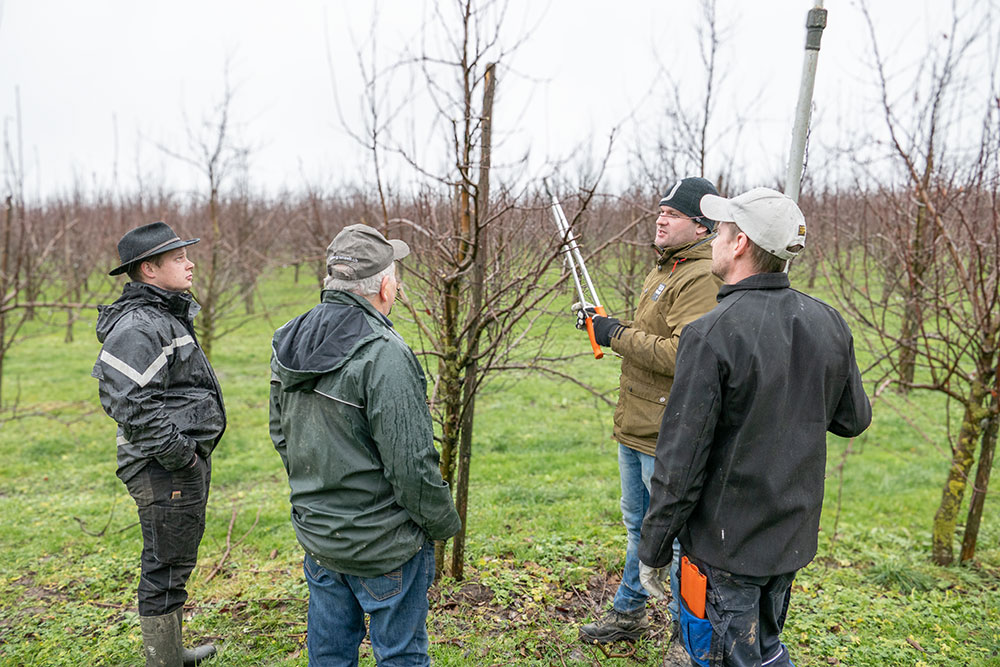The trees in our organic cider apple orchard on the farm in Ufhofen are still dormant for the winter. They therefore stand there somewhat bare in rows, on an area of around three hectares, completely without leaves. During the cold season, the trees draw a minimum of water from the soil through their roots. The nutrients accumulate in the trunk and roots, where they are ready for the formation of leaves and flowers in spring. But before the time comes, the employees at Holderhof reach for their shears and saws. Because now is the right time for winter pruning. This is necessary to optimise the tree for the next season. Without pruning, many branches would remain standing, bearing only a few apples and not receiving enough sunlight. However, this is undesirable because we want exactly the opposite for our apple juice: as many sweet apples as possible.
Contour cutting brings peace and quiet
The winter pruning of cider apples is different to that of dessert apples for direct consumption. With the former, the aim is to maximise harvest quantities, whereas with dessert apples, uniformity and external quality are the most important factors. «Dessert apples prefer to grow on horizontal branches, whereas cider fruit also grows on steep wood,» explains fruit-growing consultant Maximilian Nordmann from Immenstaad near Lake Constance. This is why different pruning techniques are needed. The expert from POB Leicht & Wetzler GmbH, which operates throughout Germany, visited Holderhof in January for an on-site consultation in the cider orchard. A few days earlier, operations manager Remo Knöpfel drove through the facility with a tractor and a special cutting device and carried out a mechanical contour cut on the trees. This involves cutting off the outer branches of the trees more or less evenly. «The tree now needs a lot of strength to close the cut wounds inflicted in this way and becomes calmer as a result,» explains Maximilian Nordmann. This calm growth is desirable for cider fruit.
Restraint is the order of the day when cutting
The profitability of the cider orchard is not only determined by the number of kilos harvested, but also by the effort involved. Compared to dessert fruit production, this must be much lower because the purchase prices for cider apples are significantly lower. This also means as little manual labour as possible. Consequently, pruning is also more pragmatic. The shears and saw are mainly used to ensure that there is enough light between the branches at the top and that the tree is kept stable so that it can bear the apples. In any case, diseased and dead branches come out. Expert Maximilian Nordmann advises cautious pruning: «If too much is pruned at once, the tree will grow too much and bear too few apples.»
Deliberate interventions in nature
In a professional cider orchard like the one in Ufhofen, the experts repeatedly intervene in nature to achieve certain effects on the trees. As a general rule, a tree with too much growth tends to produce fewer apples. Because the trees in Ufhofen tend to be a little too vigorous, the fruit-growing consultant therefore suggests two other – rather specialised – pruning options: «Targeted cuts with a saw directly into the main trunk of the tree and root pruning with a special machine slow down the tree.» The coming months and years will now show whether the measures have been worth their while.



